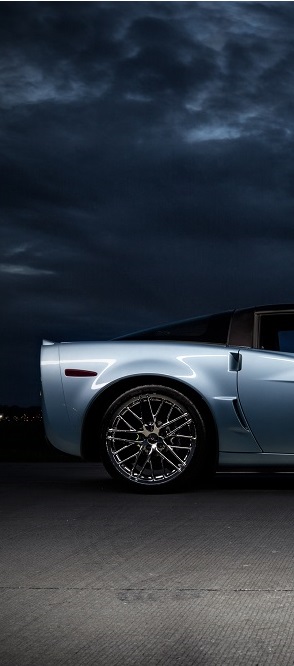

Closer look at the exhaust system
The exhaust system is designed to keep noxious gas fumes out of the passenger compartment. Internal combustion engines release a number of toxic gases, furthermore, these gases are very hot and so the system must also be heat resistant. A street legal engine at an idling speed of 800 RPM will equate to the pistons pushing spent hot gases from the firing chamber 100 times per minute into each of the two exhaust manifolds used on an eight cylinder engine. From the manifold the gases can be sent though one or more pipes to a catalytic converter, then the resonator pipe before reaching the muffler(S) and finally the gas exits at the tail pipe.
© Sunguy | Dreamstime.com – Close-up Of A Hotrod Engine Side. Photo
A Catalytic converter is not a filter, but is a place where a chemical reaction is initiated. The converter is designed to reduce the most harmful gasses such as, carbon monoxide, hydrocarbons and nitrogen oxides that are released into the atmosphere as a byproduct of a gasoline powered engine. Some of the noxious fumes are converted into less harmful; water vapor, carbon dioxide and nitrogen gas. The converter uses precious metals incased in two separate ceramic blocks to act as catalysts for the transformation. A less toxic mix of gases and the sound waves exit the converter into the resonator.
© Sunil281 | Dreamstime.com – Rubber Hanger & Silencer Photo
The sole purpose of a muffler is to suppress engine noise, but it also increases back pressure in the engines firing chamber. Reducing the engines efficiency is the trade-off and a lower horse power rating with reduced fuel economy is the result. There is a balance of acoustic quieting and performance that must be met for a car to be licensed and driven on public highways. The rule of thumb is “more power equals more noise” holds true, although there are aftermarket complete exhaust systems that are specially tuned to maximize an engine’s output and constrict the sound in a variety of innovative ways. The patent for the first modern muffler design was awarded to the Reaves Pulley Company of Columbus Indiana on May-11, 1897. The owners of the company are two brothers, Milton and Marshall; who have invented a simple apparatus to provide improved acoustic sound proofing for horseless carriages. Modern mufflers may contain fiberglass as a heat resistant baffling material and/or force incoming gases through tiny holes to fill spiral shaped airways and sound chambers. The engine noise is suppressed when opposing sound waves cause destructive interference (friction) and cancel each other out in the harmonically tuned air chambers, before the hot air is finally emitted from the exhaust pipe.
© Jenoche | Dreamstime.com – Pipe-collection Photo
Related:
https://www.youtube.com/watch?v=W6dIsC_eGBI
Republished by Blog Post Promoter









